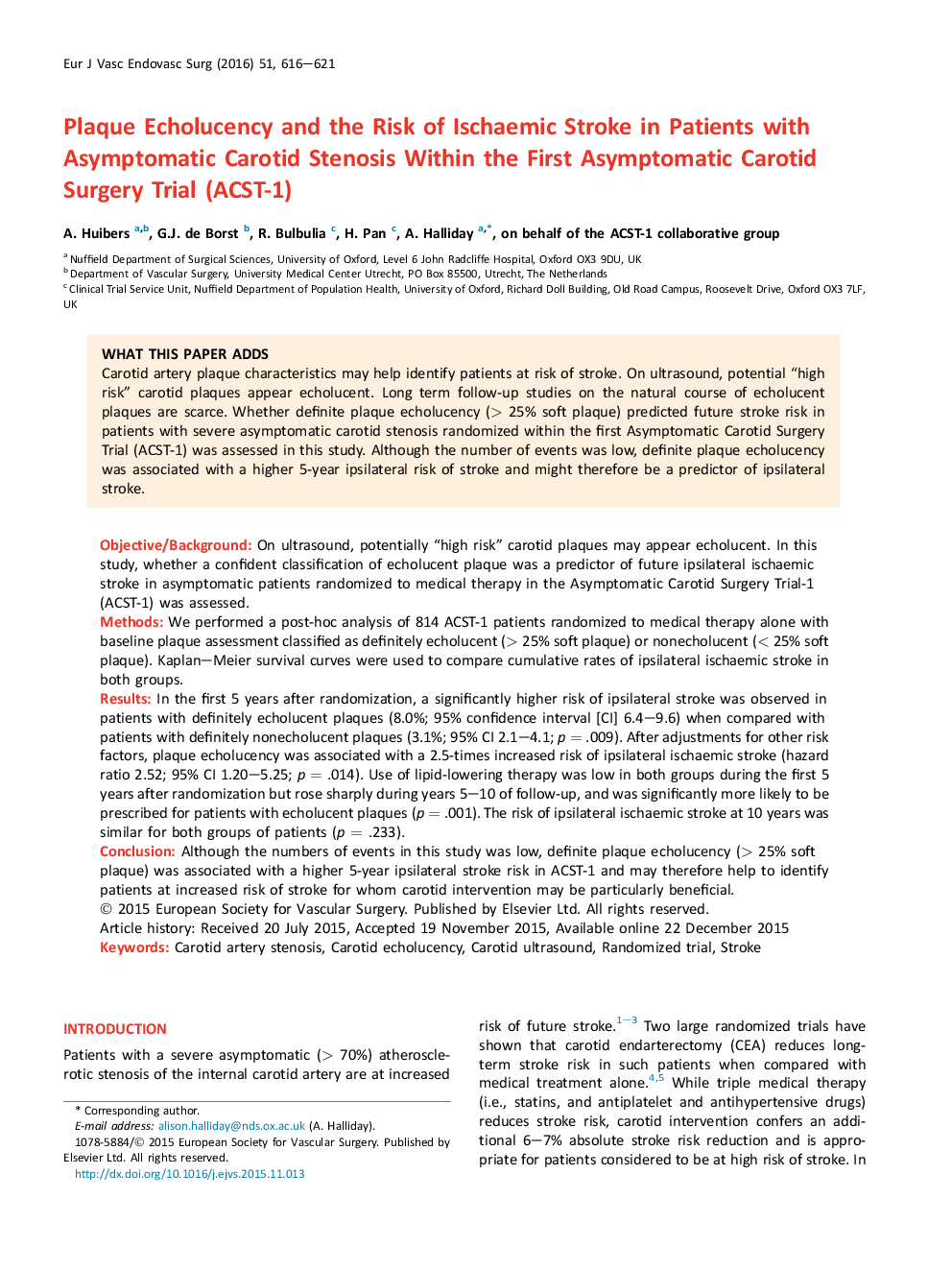| Article ID | Journal | Published Year | Pages | File Type |
|---|---|---|---|---|
| 2911745 | European Journal of Vascular and Endovascular Surgery | 2016 | 6 Pages |
Objective/BackgroundOn ultrasound, potentially “high risk” carotid plaques may appear echolucent. In this study, whether a confident classification of echolucent plaque was a predictor of future ipsilateral ischaemic stroke in asymptomatic patients randomized to medical therapy in the Asymptomatic Carotid Surgery Trial-1 (ACST-1) was assessed.MethodsWe performed a post-hoc analysis of 814 ACST-1 patients randomized to medical therapy alone with baseline plaque assessment classified as definitely echolucent (> 25% soft plaque) or nonecholucent (< 25% soft plaque). Kaplan–Meier survival curves were used to compare cumulative rates of ipsilateral ischaemic stroke in both groups.ResultsIn the first 5 years after randomization, a significantly higher risk of ipsilateral stroke was observed in patients with definitely echolucent plaques (8.0%; 95% confidence interval [CI] 6.4–9.6) when compared with patients with definitely nonecholucent plaques (3.1%; 95% CI 2.1–4.1; p = .009). After adjustments for other risk factors, plaque echolucency was associated with a 2.5-times increased risk of ipsilateral ischaemic stroke (hazard ratio 2.52; 95% CI 1.20–5.25; p = .014). Use of lipid-lowering therapy was low in both groups during the first 5 years after randomization but rose sharply during years 5–10 of follow-up, and was significantly more likely to be prescribed for patients with echolucent plaques (p = .001). The risk of ipsilateral ischaemic stroke at 10 years was similar for both groups of patients (p = .233).ConclusionAlthough the numbers of events in this study was low, definite plaque echolucency (> 25% soft plaque) was associated with a higher 5-year ipsilateral stroke risk in ACST-1 and may therefore help to identify patients at increased risk of stroke for whom carotid intervention may be particularly beneficial.
